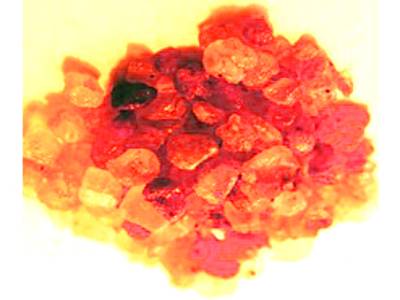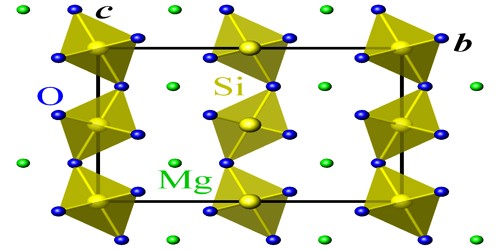Langbeinite is a potassium magnesium sulfate mineral with the chemical formula K2Mg2(SO4)3. Langbeinite crystallizes in the isometric-tetartoidal system as transparent colorless or white with pale tints of yellow to green and violet crystalline masses. It is a unique source of plant nutrition since three essential nutrients combine naturally into one mineral. It is a mineral that is a sulfate of potassium and magnesium used in the fertilizer industry
It was first described in 1891 for an occurrence in Wilhelmshall, Halberstadt, Saxony-Anhalt, Germany, and named for A. Langbein of Leopoldshall, Germany.
General Information
- Category: Sulfate mineral
- Formula: (repeating unit) K2Mg2(SO4)3.
- Crystal system: Cubic
- Crystal class: Tetartoidal (23) (same H-M symbol)
- Color: Colorless with pale shades of yellow, pink, red, green, gray.

Fig: Langbeinite
Properties
It has a vitreous luster. The Mohs hardness is 3.5 to 4 and the specific gravity is 2.83. The crystals are piezoelectric. The mineral is an ore of potassium and occurs in marine evaporite deposits in association with carnallite, halite, and sylvite.
- Crystal habit: As nodules, disseminated grains, bedded massive
- Fracture: Conchoidal
- Tenacity: Brittle
- Mohs scale hardness: 3.5 – 4
- Luster: Vitreous
- Diaphaneity: Transparent
- Specific gravity: 2.83
- Optical properties: Isotropic.
Occurrences
Langbeinite gives its name to the langbeinites, a family of substances with the same cubic structure, a tetrahedral anion, and large and small cations. It is a mineral that is often found in salt deposits as a natural sulfate of potassium and magnesium, used as a source of potash
Related substances include hydrated salts leonite (K2Mg(SO4)2·4H2O) and picromerite (K2Mg(SO4)2·6H2O).
Information Source:
















